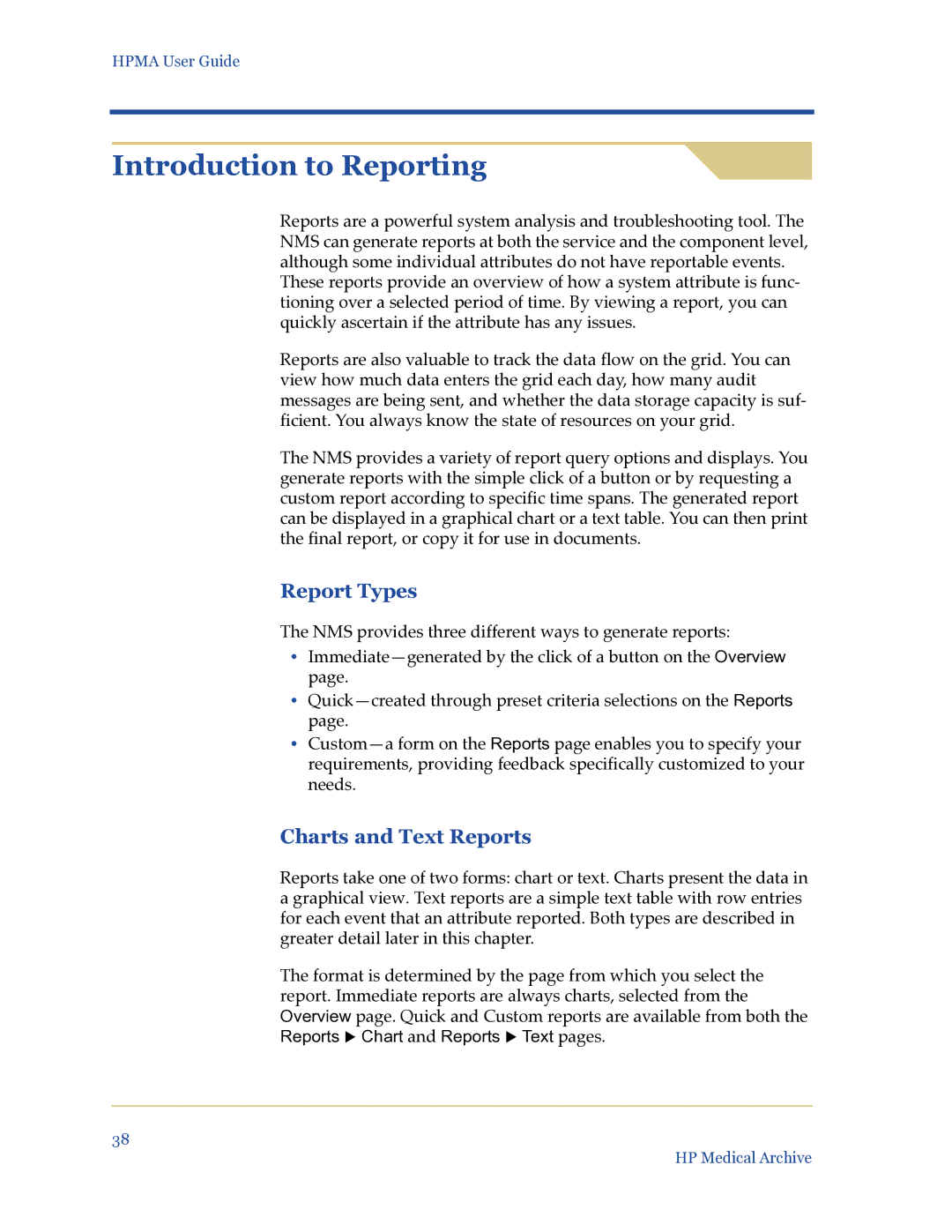
HPMA User Guide
Introduction to Reporting
Reports are a powerful system analysis and troubleshooting tool. The NMS can generate reports at both the service and the component level, although some individual attributes do not have reportable events.
These reports provide an overview of how a system attribute is func- tioning over a selected period of time. By viewing a report, you can quickly ascertain if the attribute has any issues.
Reports are also valuable to track the data flow on the grid. You can view how much data enters the grid each day, how many audit messages are being sent, and whether the data storage capacity is suf- ficient. You always know the state of resources on your grid.
The NMS provides a variety of report query options and displays. You generate reports with the simple click of a button or by requesting a custom report according to specific time spans. The generated report can be displayed in a graphical chart or a text table. You can then print the final report, or copy it for use in documents.
Report Types
The NMS provides three different ways to generate reports:
•
•
•
Charts and Text Reports
Reports take one of two forms: chart or text. Charts present the data in a graphical view. Text reports are a simple text table with row entries for each event that an attribute reported. Both types are described in greater detail later in this chapter.
The format is determined by the page from which you select the
report. Immediate reports are always charts, selected from the Overview page. Quick and Custom reports are available from both the Reports X Chart and Reports X Text pages.
38
HP Medical Archive
